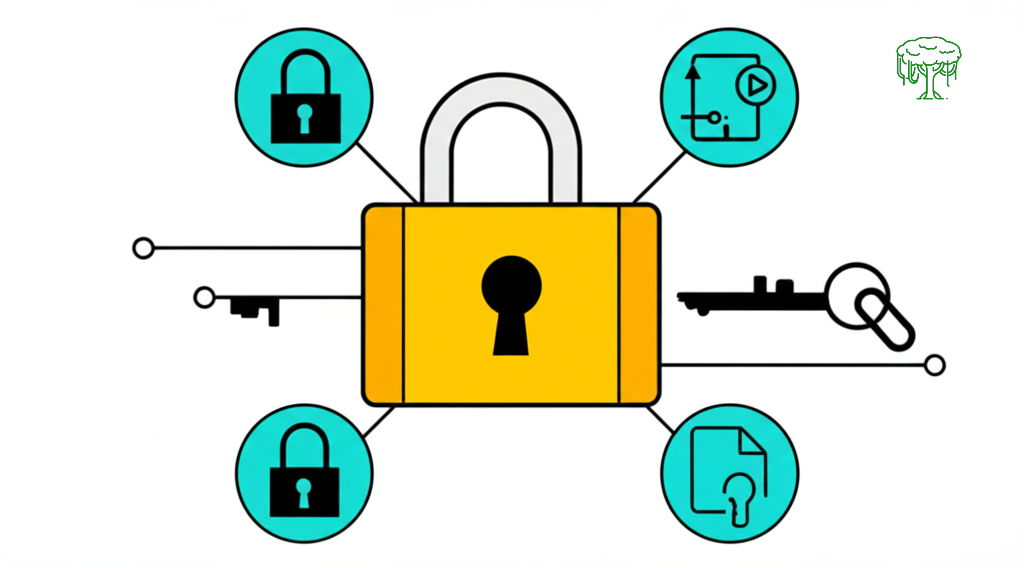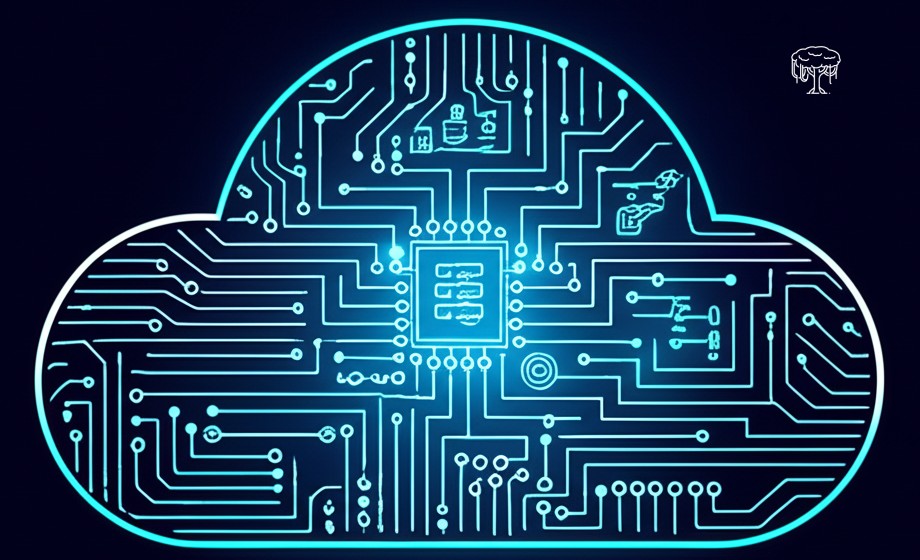CyberView: Safeguarding the Digital Frontier
Published date: 14/07/2025
1. Introduction to Cybersecurity

In an era where digital transformation shapes the very fabric of society, cybersecurity has emerged as a critical concern. The growing reliance on digital infrastructures in banking, healthcare, education, communication, and government operations has significantly increased our vulnerability to cyber threats. Cybersecurity refers to the practices, technologies, and processes designed to protect networks, devices, programs, and data from attack, damage, or unauthorized access. It serves as the first line of defense in ensuring the confidentiality, integrity, and availability of digital information.
As cyber threats evolve in sophistication, so too must our defense mechanisms. Cybersecurity is no longer an IT department’s isolated responsibility; it is a shared imperative for individuals, corporations, and governments. From phishing scams and malware to advanced persistent threats and cyber warfare, the landscape is riddled with complex dangers. Effective cybersecurity involves a blend of technical innovation, user awareness, and regulatory frameworks.
The significance of cybersecurity extends beyond personal data protection. It underpins the stability of economies, the functionality of critical infrastructure, and even national security. As such, understanding the basics of cybersecurity and staying informed about emerging threats and defenses is essential for everyone in today’s connected world.
2. From Humble Beginnings: The Evolution and History of Cybersecurity
The concept of "cybersecurity" as we know it is relatively young, yet its roots stretch back to the dawn of computing.
- The Early Days (1960s - 1980s): The Dawn of Digital Vulnerability
- ARPANET and the First "Attacks": The precursor to the internet, ARPANET, was primarily for academic and research purposes. Early "attacks" were more akin to pranks or unauthorized explorations of the network. The first documented computer worm, the "Morris Worm" in 1988, highlighted the devastating potential of self-replicating code, crashing a significant portion of the nascent internet.
- Focus on System Reliability: In this era, security was often an afterthought, built into individual systems rather than networks. The primary concern was system reliability and data integrity. Antivirus software began to emerge in rudimentary forms.
- The Internet Boom (1990s - Early 2000s): The Rise of Malware and Script Kiddies
- Increased Connectivity, Increased Threats: As the internet went mainstream, so did the number and variety of cyber threats. Email became a primary vector for viruses (like Melissa, ILOVEYOU). "Script kiddies" – individuals using pre-written malicious scripts – proliferated, driven by notoriety.
- Early Firewalls and IDS: Organizations started implementing basic firewalls to control network traffic and Intrusion Detection Systems (IDS) to spot suspicious activity.
- The Information Age (Mid-2000s - 2010s): Organized Crime and State-Sponsored Attacks
- Monetization of Cybercrime: Cybercrime became highly organized and financially motivated. Phishing scams, identity theft, and online fraud became rampant.
- Nation-State Involvement: State-sponsored cyber warfare emerged, with highly sophisticated attacks like Stuxnet demonstrating the potential for cyber weapons to cause physical damage to critical infrastructure.
- Focus on Compliance: Regulations like HIPAA and PCI DSS began to drive corporate cybersecurity practices, emphasizing data protection.
- The Connected Era (2010s - Present): Cloud, Mobile, IoT, and Advanced Threats
- Ubiquitous Connectivity: The proliferation of smartphones, cloud computing, and the Internet of Things (IoT) vastly expanded the attack surface.
- Sophisticated Attack Vectors: Ransomware-as-a-Service (RaaS), advanced persistent threats (APTs), supply chain attacks, and AI-powered phishing became the norm.
- Zero Trust and AI/ML Defenses: New defense paradigms like Zero Trust architecture and the use of Artificial Intelligence/Machine Learning for threat detection gained prominence.
3. Importance of Cybersecurity

Cybersecurity is fundamental to the smooth operation of digital ecosystems. As our dependence on technology deepens, the repercussions of cyberattacks grow increasingly severe. Financial losses from data breaches, erosion of public trust, and potential threats to human life in sectors like healthcare underscore the importance of robust cyber defenses.
For businesses, cybersecurity ensures the protection of intellectual property, customer data, and operational integrity. Breaches can result in massive financial penalties, legal consequences, and irreversible reputational damage. For governments, cybersecurity is a matter of national defense. State-sponsored attacks can disrupt essential services, manipulate democratic processes, and steal classified information.
Individuals, too, are at risk. Identity theft, financial fraud, and privacy violations are common consequences of weak personal cybersecurity. The rise of remote work, online education, and cloud computing has further widened the attack surface, making personal vigilance more crucial than ever.
Moreover, the interconnectedness of devices through the Internet of Things (IoT) has created a complex web of vulnerabilities. A single compromised device can serve as a gateway for widespread damage. In this context, cybersecurity serves as the backbone of digital trust, enabling innovation and growth while safeguarding against malicious intent.
4. Types of Cyber Threats

The realm of cyber threats is vast and constantly evolving. Understanding the various types of threats is key to building effective defense strategies.
3.1 Malware
Malware, or malicious software, includes viruses, worms, trojans, and ransomware. These programs are designed to damage, disrupt, or gain unauthorized access to systems. Ransomware, in particular, encrypts user data and demands payment for its release.
- Viruses: Attach themselves to legitimate programs and spread when those programs are executed.
- Worms: Self-replicating programs that spread across networks without human intervention.
- Spyware: Secretly monitors and collects information about your computer activity.
- Trojan Horses: Disguise themselves as legitimate software but carry a malicious payload.
3.2 Phishing
These attacks prey on human psychology rather than technical vulnerabilities. Phishing involves sending fraudulent communications that appear to come from a reputable source, often an email from your bank, a popular social media platform, or even a colleague. The goal is to trick you into revealing sensitive information like passwords or credit card numbers. Social engineering is a broader term for manipulating people into performing actions or divulging confidential information.
3.3 Denial-of-Service (DoS) Attacks
These attacks aim to make an online service or website unavailable by overwhelming it with a flood of traffic from multiple compromised computer systems. Imagine thousands of people trying to enter a single door at once – it causes a jam, preventing legitimate access.
3.4 Man-in-the-Middle (MitM) Attacks
In these attacks, a hacker intercepts communication between two parties to steal data or manipulate information. They often occur in unsecured public networks.
3.5 Zero-Day Exploits
These attacks exploit unknown vulnerabilities in software before developers can issue patches. They are particularly dangerous due to the lack of prior detection.
3.6 Insider Threats
Sometimes, the danger comes from within. An insider threat refers to a security risk that originates from within the targeted organization, typically from an employee, former employee, contractor, or business associate who has access to sensitive information or systems. These can be malicious or unintentional.
3.7 Advanced Persistent Threats (APTs)
These are sophisticated, long-term targeted attacks where an unauthorized user gains access to a network and stays there undetected for a prolonged period. Often state-sponsored, APTs aim to steal data, disrupt operations, or spy without being discovered.
5. Cybersecurity Tools and Technologies
A robust cybersecurity framework relies on a wide array of tools and technologies designed to detect, prevent, and respond to threats.
4.1 Firewalls
Think of a firewall as a digital gatekeeper for your network. It monitors incoming and outgoing network traffic and decides whether to allow or block specific traffic based on a defined set of security rules.
4.2 Antivirus and Antimalware Software
These programs are designed to detect, prevent, and remove malicious software from your computer systems. Regular updates are vital for them to recognize the latest threats.
4.3 Intrusion Detection and Prevention Systems (IDPS)
These systems monitor network traffic for suspicious activity and known threats. An IDS will detect and alert, while an IPS can automatically block or prevent the detected malicious activity.
4.4 Encryption
Encryption converts data into a coded format that can only be accessed with the correct decryption key. It is vital for protecting data in transit and at rest.
4.5 Multi-Factor Authentication (MFA)
MFA requires users to verify their identity using two or more methods (e.g., password, fingerprint, SMS code), significantly reducing unauthorized access.
4.6 Virtual Private Networks (VPNs)
VPNs create secure, encrypted tunnels for internet traffic, protecting data from interception on public networks.
4.7 Security Information and Event Management (SIEM)
SIEM systems collect and analyze security-related data from various sources across an organization's IT infrastructure. This provides a centralized view of security events, helping identify and respond to threats more efficiently.
4.8 Endpoint Detection and Response (EDR)
EDR solutions monitor end-user devices (endpoints) like laptops, desktops, and mobile devices for suspicious activities, providing continuous visibility and enabling rapid response to threats at the endpoint level.
6. Best Practices for Individuals and Organizations

Cybersecurity is a collective effort. Implementing best practices at every level enhances overall resilience.
For Individuals:
- Use strong, unique passwords and change them regularly.
- Enable multi-factor authentication on all accounts.
- Avoid clicking on suspicious links or downloading unknown attachments.
- Keep software and operating systems updated.
- Use antivirus software and perform regular scans.
- Back up important data regularly.
- Be cautious when using public Wi-Fi; use VPNs when possible.
For Organizations:
- Conduct regular cybersecurity training and awareness programs.
- Implement role-based access controls.
- Perform routine vulnerability assessments and penetration testing.
- Establish an incident response plan.
- Encrypt sensitive data at rest and in transit.
- Monitor systems continuously using SIEM and EDR tools.
- Enforce BYOD (Bring Your Own Device) policies and secure mobile access.
7. Current Trends in Cybersecurity

The cybersecurity landscape is dynamic, with new trends shaping how threats are addressed and mitigated.
6.1 Artificial Intelligence (AI) and Machine Learning (ML)
AI and ML are being rapidly adopted to enhance cybersecurity defenses. They can analyze vast amounts of data to detect anomalies, identify emerging threats, automate incident response, and even predict potential attacks. However, as mentioned earlier, adversaries are also leveraging AI.
6.2 Cloud Security
As more organizations migrate to the cloud, ensuring data security in cloud environments has become a top priority. This includes securing APIs, managing identities, and ensuring compliance.
6.3 Zero Trust Architecture
This security model operates on the principle of "never trust, always verify." It means that no user or device, whether inside or outside the network, is automatically trusted. Every access request is authenticated, authorized, and continuously validated.
6.4 Rise of Ransomware-as-a-Service (RaaS)
Cybercriminals are offering ransomware tools to affiliates, making it easier for less skilled actors to launch sophisticated attacks.
6.5 Regulatory Compliance
Laws like GDPR, CCPA, and HIPAA require strict data protection measures. Compliance has become a key driver of cybersecurity investment.
6.6 Cyber Insurance
Organizations are increasingly investing in cyber insurance to mitigate financial losses from cyber incidents.
8. The Future of Cybersecurity
The future of cybersecurity will be defined by continued innovation, evolving threats, and a deeper integration of security into digital design.
- Quantum Computing: While promising for computing power, quantum computers could break traditional encryption, necessitating quantum-safe cryptography.
- Autonomous Security Systems: AI-driven autonomous systems will identify and respond to threats in real-time without human intervention.
- Cybersecurity Mesh: A distributed architectural approach that integrates security into the individual nodes of a system rather than centralizing it.
- Digital Identity Verification: Advances in biometrics and blockchain will revolutionize identity verification and authentication.
As cyber threats grow more complex, proactive and adaptive strategies will be crucial. Education, collaboration, and investment in innovation will define successful cybersecurity futures.
9. Real-World Case Studies
9.1 The Equifax Data Breach (2017)
One of the largest data breaches, affecting over 147 million people. Attackers exploited a known vulnerability in a web application.
Lessons Learned: - Timely patching of known vulnerabilities is critical. - Transparency and quick response are essential for damage control.
9.2 WannaCry Ransomware Attack (2017)
This global ransomware attack affected over 200,000 computers across 150 countries, crippling hospitals, banks, and businesses.
Lessons Learned: - Regular system updates and backups can mitigate ransomware impact. - International cooperation is key in combating cybercrime.
9.3 SolarWinds Supply Chain Attack (2020)
A sophisticated attack where hackers compromised a trusted software update to infiltrate government and corporate networks.
Lessons Learned: - Supply chain security is crucial. - Even trusted systems must be monitored continuously.
10. Conclusion
Cybersecurity is no longer a luxury—it is a necessity in the digital age. As threats become more advanced and pervasive, a proactive approach to security is essential. By understanding the threat landscape, utilizing modern tools and technologies, and adhering to best practices, individuals and organizations can significantly reduce their risk.
Continued education, awareness, and collaboration across industries and governments will be vital. Cybersecurity is a shared responsibility that protects not only data but the foundation of our digital society.

